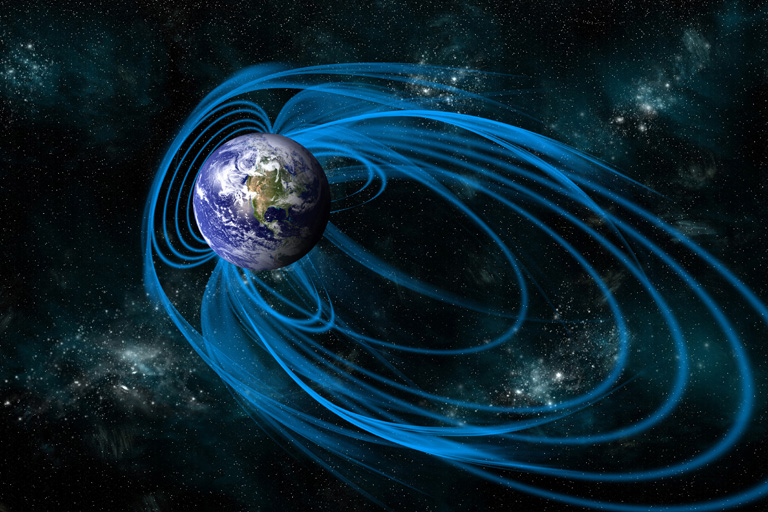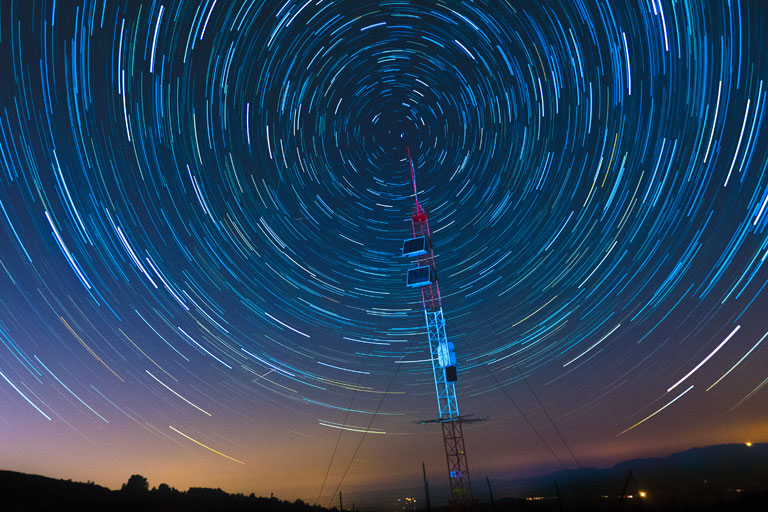A cutting-edge space telescope built from steel tubes could help predict devastating solar storms
Recycled steel tubes originally destined for construction sites are now uncovering the mysteries of the universe – including the detection of a huge solar eruption in 2015 – after being repurposed to build a cosmic ray telescope in India.
Nestled in the hills surrounding Ooty, in the southern state of Tamil Nadu, the Cosmic Ray Laboratory (CRL) hosts a variety of instruments designed to study the high-energy particles that bombard Earth from outer space.
The GRAPES-3 telescope detects sub-atomic particles called muons and consists of 3,712 6m-long steel tubes arranged in grids.
Muons are created when high energy particles from outer space collide with molecules in the Earth’s upper atmosphere. They are important to scientists because, unlike these other particles, muons are able penetrate down to ground level, which enables researchers to study cosmic radiation.
Each of the steel tubes has a tungsten wire the width of a hair running through the middle, and is sealed at both ends and filled with a mix of argon and methane gas. As muons pass through the tubes, they ionise the gas inside causing electrons to pass to the wire and generate a signal.
 An illustration of solar winds impacting on the earth’s magnetosphere
An illustration of solar winds impacting on the earth’s magnetosphere
Why steel tubes work
Other muon telescopes use water tanks or plastic ‘scintillators’ that light up when hit by a particle, but the former can only detect when a particle passes through the tank, not its direction of travel, and the latter requires expensive and fragile detectors. CRL lead scientist Dr Sunil Gupta says nothing matches galvanised steel’s cost-effectiveness and robustness.
“The steel tubes come in very handy because they are intrinsically very strong structurally,” says Gupta. Brass is too fragile and copper is both too fragile and too expensive, so we used steel tubes, which are relatively inexpensive and very, very sturdy.”
 The GRAPES-3 muon telescope in Ooty, India.
The GRAPES-3 muon telescope in Ooty, India.
Recycling the pipes
The steel pipes were originally manufactured in Japan for use in reinforced concrete, but at the CRL they are already on their second science assignment. Before that they were converted into particle detectors for use in a neutrino telescope housed in caverns two kilometres below the Kolar Gold Fields, in the neighbouring state of Karnataka.
After nearly two decades, the collaboration between Indian and Japanese researchers came to an end, and the pipes were due to be scrapped until the researchers at Ooty decided to repurpose them in the mid-1990s.
CRL lead scientist Dr Sunil Gupta says nothing matches galvanised steel’s cost-effectiveness and robustness
Gupta says that when the telescope was designed the scientists wanted to make it distinct from others. To do so, they created the first large-area muon telescope able to detect where muons were coming from.
If a muon hits a tube, it is impossible to tell where in the tube it hit. So, the team layered four rows of tubes on top of each other, switching the orientation of the layers by 90 degrees each time to create a grid.
When a muon passes through the first layer, a tube on the X-axis will light up, and when it passes through the second layer a tube on the Y-axis will light up. This gives the researchers a coordinate showing where the muon hit and by watching the particle pass through the layers they can track its path.
 A satellite comms tower under a starry sky – solar storms could potentially disable communications across the entire planet.
A satellite comms tower under a starry sky – solar storms could potentially disable communications across the entire planet.
A ground-breaking discovery
Earlier this year, this novel capability saw Gupta, colleagues from the Tata Institute of Fundamental Research in Mumbai, and collaborators in Japan, release a ground-breaking paper about a burst of cosmic rays that breached the Earth’s magnetosphere – a magnetic field that normally shields Earth from charged particles.
In 2015, the Sun released a cloud of charged gas, or plasma, known as a coronal mass ejection (CME) large enough to breach the magnetosphere for two hours. It was only GRAPES-3’s unique ability to track the direction of the particles that made it possible to determine what had happened.
In 2015, the Sun released a cloud of charged gas, or plasma, known as a coronal mass ejection (CME) large enough to breach the magnetosphere for two hours
“When this phenomenon occurred, we found it happened in all directions simultaneously,” says Gupta. “That is crucial information, because that told us it was happening right in our neighbourhood and not far away in outer space.”
Tracking and understanding this kind of event is crucial, Gupta adds, because truly massive solar storms can ionise the air, causing electronics to short-circuit. The last major solar storm took place in 1859 and caused telegraph systems across Europe and North America to fail.
“We don’t know when we will next get hit but one is overdue,” says Gupta. “If plasma of that intensity arrives it will short circuit most of the grid, not to mention satellites, the internet, anything electronic.” With the stakes this high, Gupta will be counting on the reliability of steel as he uses his cosmic telescope to better understand the warning signs.
Images: iStock, Science Photo Library, TIFR